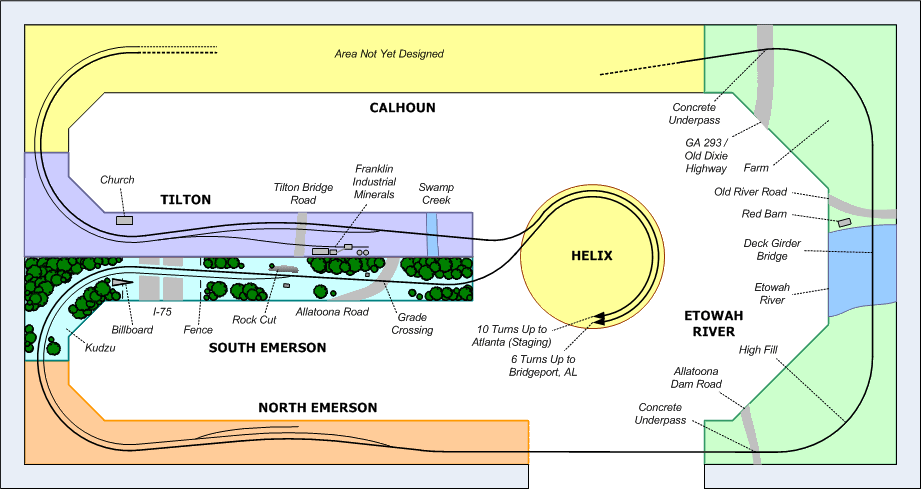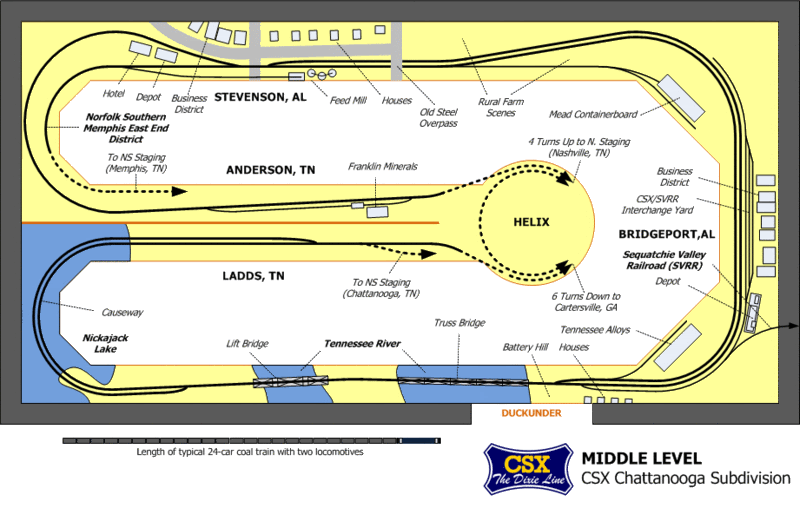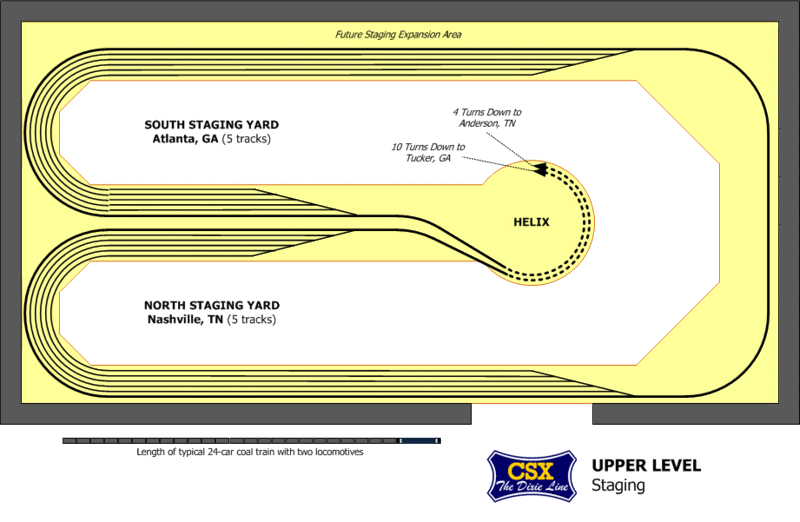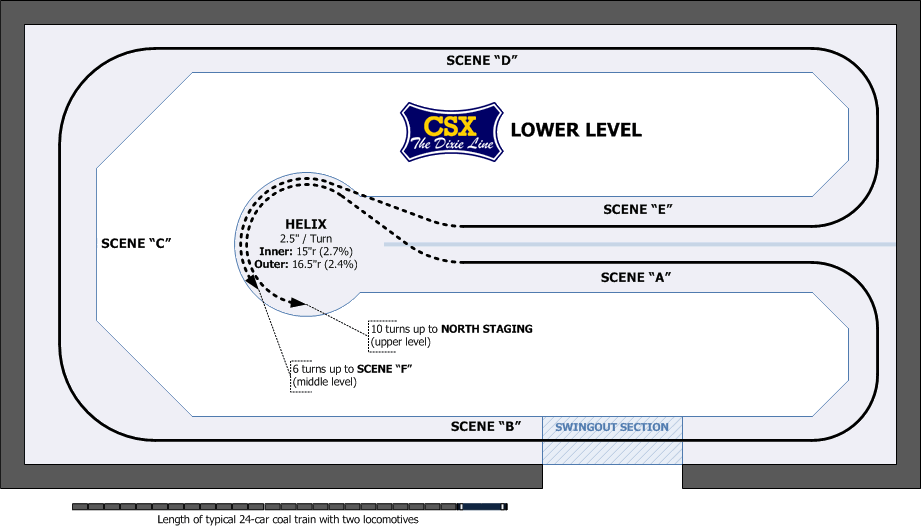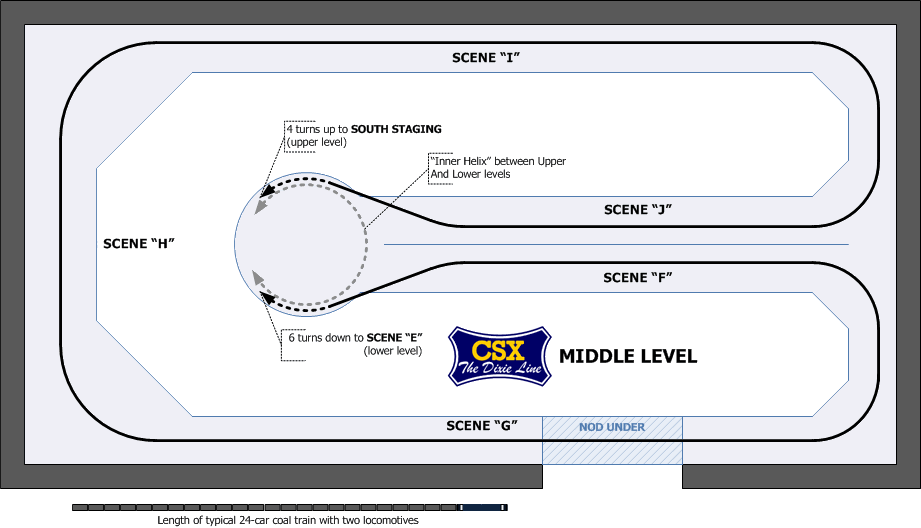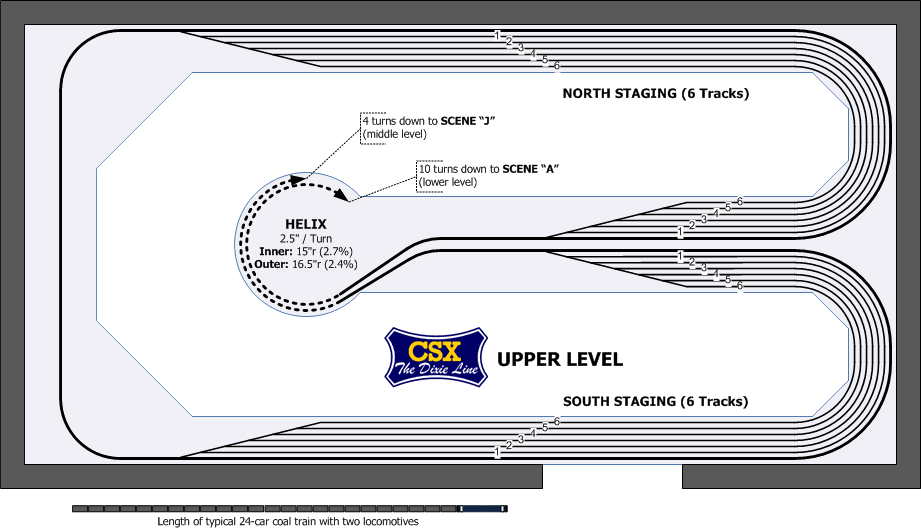» Inspirational LayoutsThe following layouts have been instrumental in allowing me to realize my vision for the CSX Dixie Line. I am truly thankful that the builders of these miniature empires have shared their ideas and techniques to allow others such as myself to realize our own dreams.
 Joe Fugate's HO Scale Siskiyou Line
Joe Fugate's HO Scale Siskiyou Line I purchased one of Joe Fugate's DVDs in 2007 at a model railroad show, and more than any other single event, this started me on my way to finally designing and building a
real layout--my CSX Dixie Line. This DVD was both inspirational and educational. Inspirational: Joe's layout layout captures the look and feel of the real thing so well that there are times when you are not sure if you are looking at pictures of the layout or historical photos of the real Southern Pacific as it winds it way from central Oregon through the Siskiyou Mountains to the Pacific coast. Educational: The research, construction and scenery techniques displayed on the DVD series are presented so clearly and with such simplicity, it really promoted the confidence boost I needed to embark on my layout venture. I consider Joe's layout and his DVD series to be a fountain of model railroading knowledge that I rely upon to realize my vision.
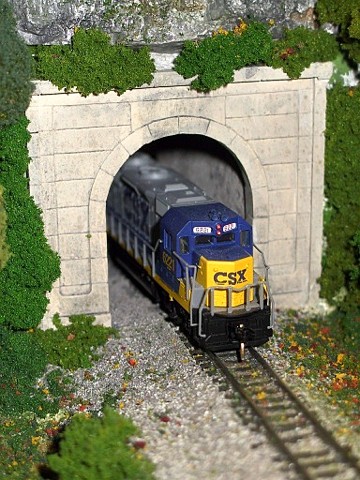 CSXT Shenandoah Division
CSXT Shenandoah Division I came across Bruce Faulkner's layout in 2007 while researching the web for ideas on construction techniques that I could use. Not only is the CSXT Shenandoah Division a superb proto-freelanced N-scale empire, but the website detailing the design and construction that began in 2002 is simply
off the charts! This railroad shaped my own design in many ways, such as long narrow shelves, long mainline runs, prototypical modern operations, and--most importantly--simple around-the-walls benchwork construction using ripped plywood framing members. You will notice that I have employed very similar benchwork construction in my layout, adapted as needed to fit my available space. Quite simply, I could not have built this benchwork without first seeing how it came together on the CSXT Shenandoah Division. The layout website is also expertly designed and contains a wealth of information that I have relied upon (and still do!) to bring my own layout to reality.
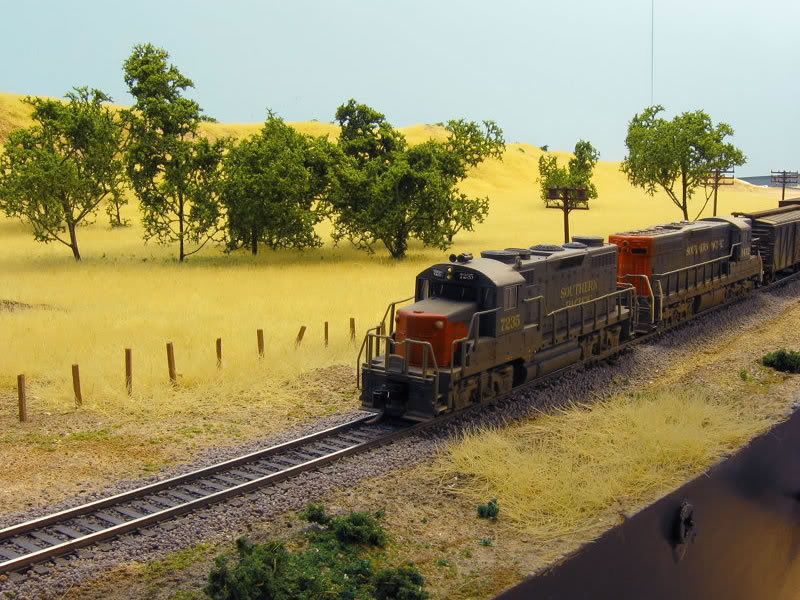 Southern Pacific Coast Line in N Scale
Southern Pacific Coast Line in N ScaleA model railroad layout in N scale (1:160 proportion) representing a portion of the Southern Pacific Coast Line in Central California between Callender and Surf, including Guadalupe yard, set in the early 1970s. The layout is focused on realistic operations and features a great scenery-to-train ratio.
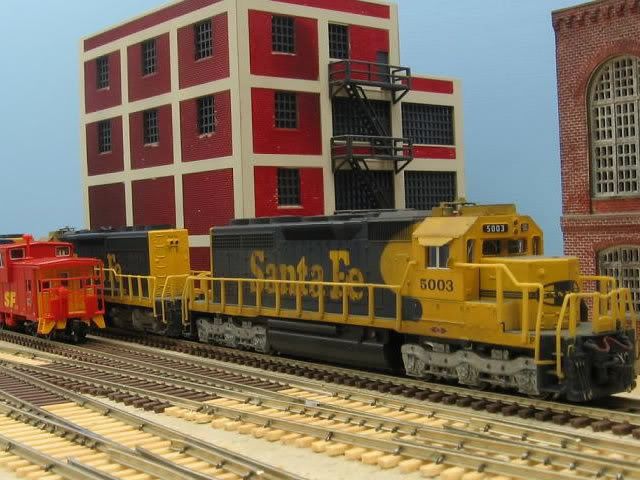 SPSF Owens Valley Subdivision
SPSF Owens Valley SubdivisionThe Owens Valley Subdivision is a double deck N scale layout depicting what could have happened if the merger between the Southern Pacific Railroad and the Santa Fe Railway was approved. It also is a "proto free lanced" railroad, where the prototype never had a standard gauge railroad.
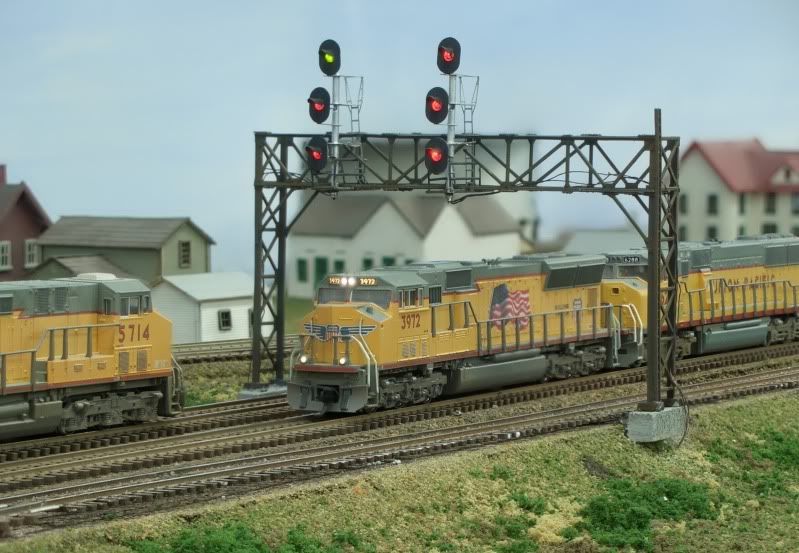 Daryl Kruse's N-Scale UPRR Geneva Subdivision
Daryl Kruse's N-Scale UPRR Geneva SubdivisionDaryl Kruse models the modern Union Pacific through the nation's heartland. His previous Rochelle Subdivision layout was featured in
Model Railroader in 2007 before it was deconstructed to make way for this new empire, which features a long double-track mainline run.
 Michael Burgett's HO-Scale Clifton Forge Division of the C&O
Michael Burgett's HO-Scale Clifton Forge Division of the C&OThis layout takes visitors back to the busy C&O mainline along the James River in Virginia during the mid 1960s. It features prototypical operations, great scenery, a linear track plan on multiple decks, and an incredible operating signal system with a working CTC machine.
 John Parker's HO-Scale BNSF Fall River Division
John Parker's HO-Scale BNSF Fall River DivisionThe Fall River Division is a prototype-based freelance representation of the BNSF Railway operating between the Midwest, and points north through the Pacific Northwest. The time frame is between 2000 and 2005, and unit coal, intermodal, Amtrak, and mixed freight trains are frequently seen.
» Forums & Discussion Groups TrainBoard
TrainBoardGreat collection of model railroading and railfanning forums, including
the best N-scale model railroading forum on the planet. The information exchanged on this forum, such as how-to, examples and layout tours, has helped me out every time I have got into a jam on my layout. Also an excellent source for model railroad and prototype photography.
» Search Engines & Directories

.






